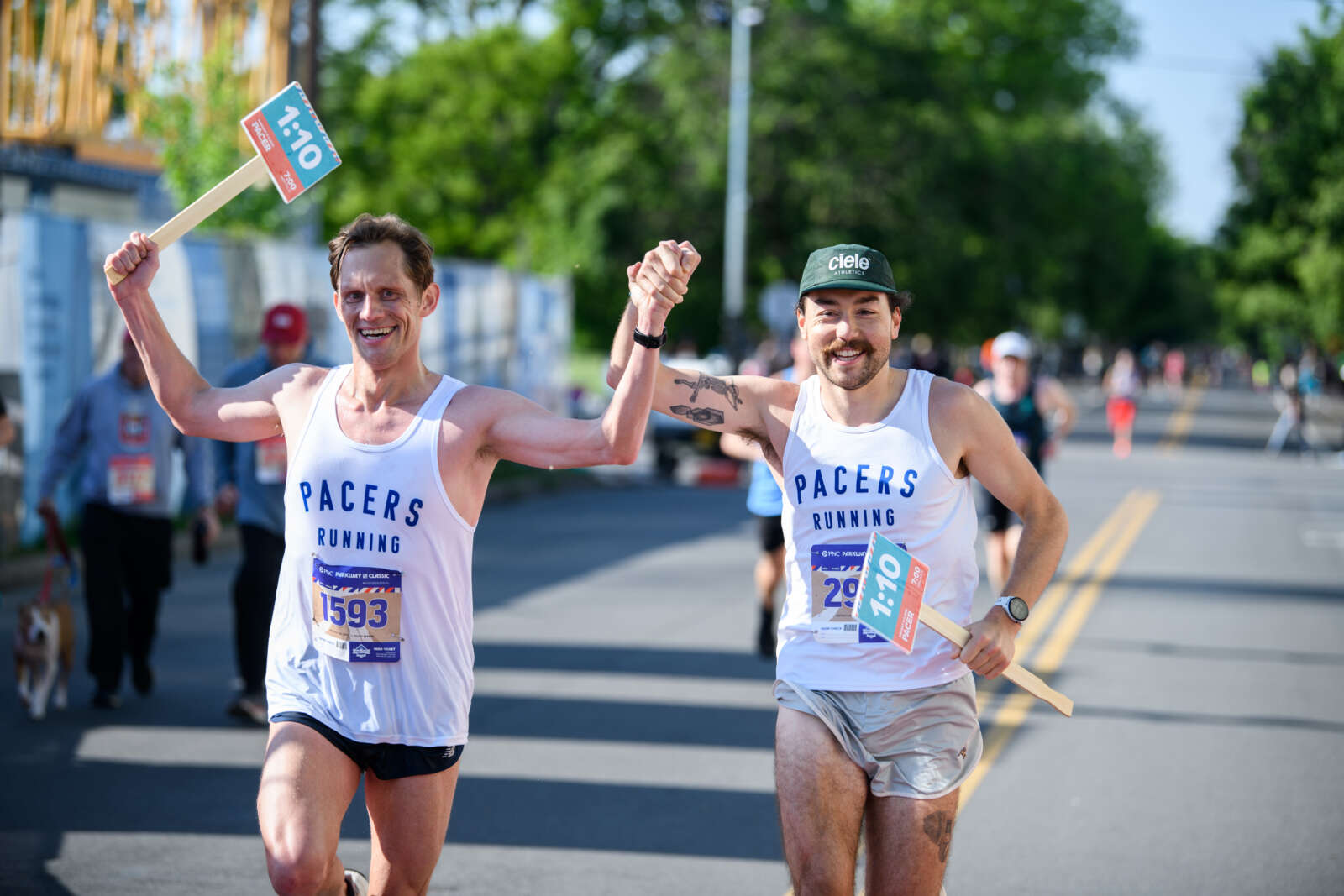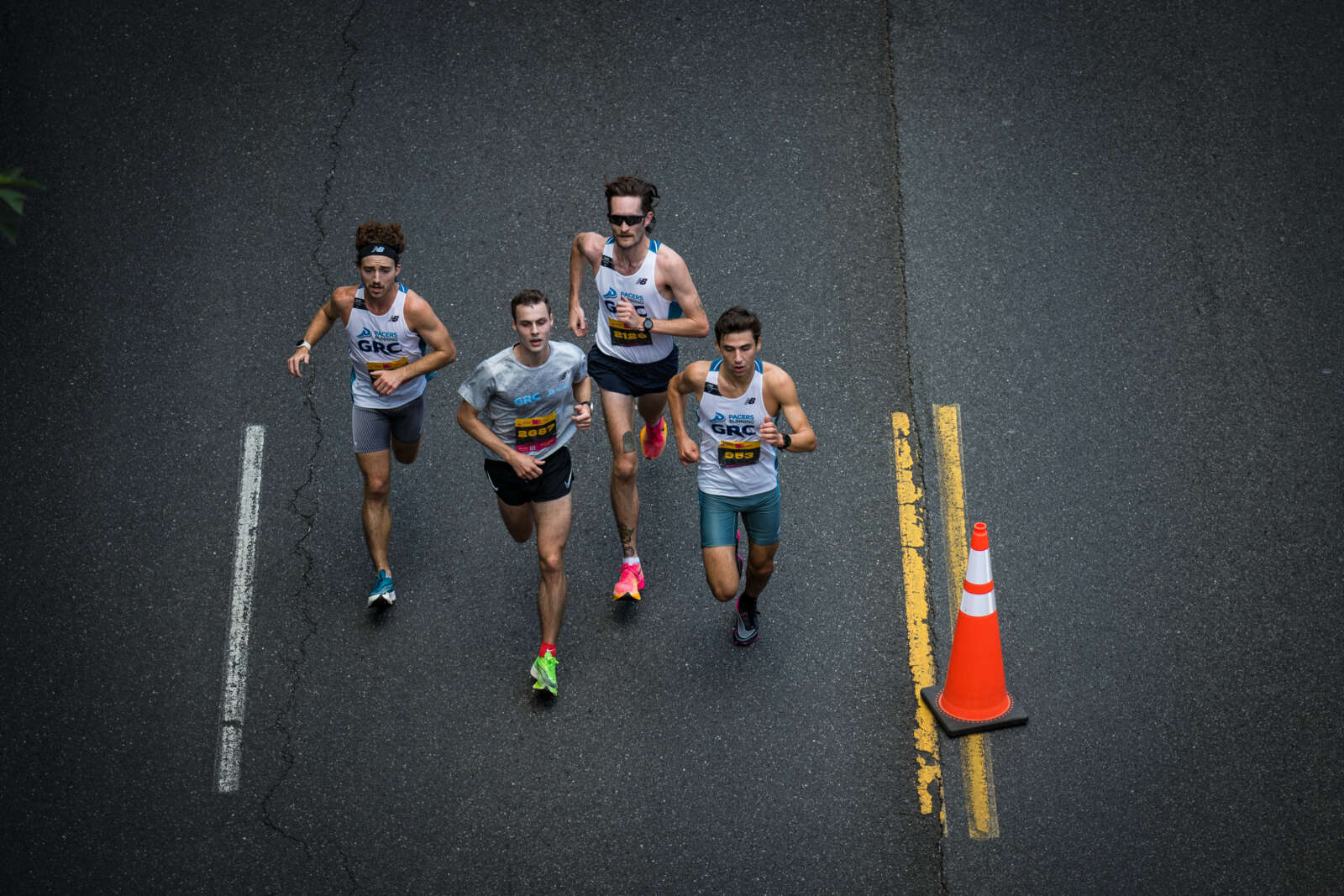So you are three weeks away from your goal race and are in the shape of your life. You meet your pace group for a 14-mile training run on the Capital Crescent Trail and you are feeling good. Suddenly, you begin to experience pain on the top of your foot as your pass through the Dalecarlia Tunnel toward Georgetown. The pain intensifies as you hit Fletcher’s Boathouse and you have to stop. You have one of those “oh no” moments as you hobble off to wait for one of your running buddies to pick you up and take you back to Bethesda. The next day, you notice swelling and feel tenderness on the top of your foot.
There is a good chance that you just experienced your first stress fracture. If the pain does not improve after three to five days of rest, your next step is to seek medical attention. The key factors in diagnosing a stress fracture are pain that intensifies as your run progresses, and tenderness and swelling at a specific point on your foot, shin or heel.
Stress fractures are hairline breaks in our bones and generally do not show up on x-rays for two to three weeks, so a good clinical exam is crucial. Don’t be fooled if your initial x-rays are normal. An MRI on the other hand, while expensive, will pick up the stress fracture immediately.
Unfortunately, stress fractures are often season ending injuries. It is best to let them heal, address the factors leading to the fracture and come back even stronger the next season. In runners, the three most common stress fractures are of the metatarsal bones (long bones in the feet just behind the toes), calcaneous (heel bone) and the tibia (shin bone).
The thought process behind stress fractures has traditionally focused on overtraining, poor mechanics or the wrong choice of running shoes.
The often-overlooked and probably most important factor, however, is Vitamin D deficiency. Vitamin D is a fat-soluble vitamin found in a few foods and produced naturally by our bodies when we are exposed to the ultraviolet rays of the sun. Many foods, such as milk, cheese and yogurt are fortified with Vitamin D, but this is the inactive form of Vitamin D. Vitamin D is actually a hormone that must go though 2 transformations in our bodies to function in the active form. The active form of Vitamin D allows us to absorb calcium through our gut and keeps our bones strong.
Vitamin D deficiency is also linked to cardiovascular disease, osteoarthritis, dementia, depression, multiple sclerosis, cancer and autoimmune diseases.
A 2009 article in the Journal of the American Medical Association found that 75 percent of Americans are Vitamin D deficient. Risk factors include obesity, dark pigmented skin, living in the northern states (that includes people in the DC area), the vegan diet, diseases of the digestive tract, kidney disease and those over age 65.
Most commonly, it is our reduced exposure to the ultraviolet rays of the sun that puts us at risk. Unlike our ancestors, many of us spend our days indoors. When we are out in the sun, we put on that protective layer of sunblock, limiting our exposure to those vital ultraviolet rays. This comes into play more often in the winter months when days are short. We run in the early and late hours and miss out on adequate sun exposure.
If you feel that you are at risk or have experienced a stress fracture, ask your doctor to have your Vitamin D tested. Be specific and ask for a 25(OH)D test.
Although the normal range is between 30ng/ml and 100 ng/ml, The Vitamin D Council suggests that we should maintain a level of 50 ng/ml.
They also recommend that adults take up to 5,000 IU of Vitamin D3 supplement daily in order to reach and maintain this level. It is important that we take Vitamin D3 (active Vitamin D). You can purchase Vitamin D3 over the counter at any pharmacy.
It is also important to maintain adequate calcium intake. Calcium is found in dairy products as well as leafy green vegetables such as kale and broccoli. Many foods such as cereal, orange juice, rice milk, soymilk and almond milk are fortified with calcium. The National Institutes of Health recommends that adults 19 years and older take in between 1000 mg and 1200 mg of calcium per day.
I find that 90% of the runners I diagnose with stress fractures are Vitamin D deficient. I recommend taking between 2000 IU and 4000 IU of Vitamin D3 per day as a start. I then repeat Vitamin D level tests every two months until adequate levels are reached. I recommend adding a calcium supplement of 600 mg to 1200 mg a day if runners do not eat foods rich in calcium.
A little Vitamin D may be all you need to make it down to Georgetown and back without a problem. Best of luck in your spring races.
Run smart and run safe.
Lee Firestone is a Board Certified Podiatrist with the Foot and Ankle Specialists of the Mid-Atlantic. He was voted best running doctor in the Best of Washington Running 2013. He’s a fellow at the American College of Foot and Ankle Surgeons and the American Academy of Podiatric Sports Medicine. He is also a RRCA-certified running coach and currently coaches the Experienced Marathoners Program with the Montgomery County Road Runners Club. He has completed 13 marathons and has a personal record of 2:57:03.
Recent Stories
Looking for our race calendar? Click here Submit races here or shop local for running gear
James W. Foley Freedom Run
Inspired by the moral courage of freelance journalist James Foley, the mission of the nonprofit Foley Foundation is to secure the freedom of Americans held captive abroad unjustly by terrorist organizations or rogue states, and to promote journalist safety.
The
Kensington 8K Race
Since 1994, the Kensington 8K Race has been a favorite DC area fall race – a fun, fast event with beauty, challenge, and excitement. Run it this year on Saturday, September 21, 2024!
The 8K distance is $39, with a






